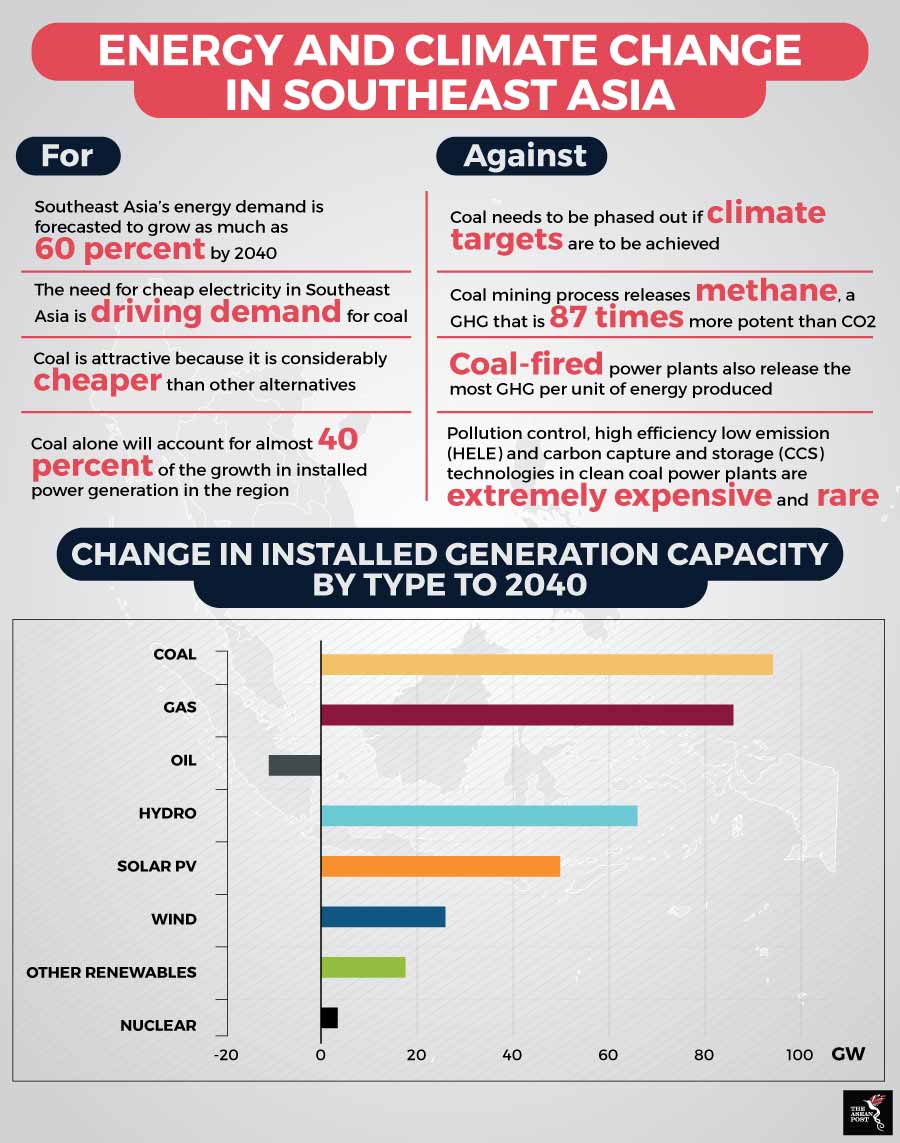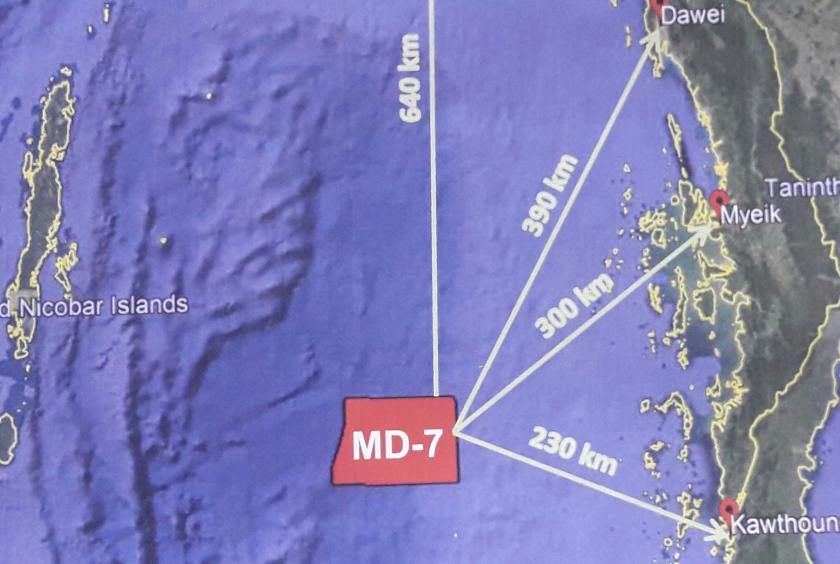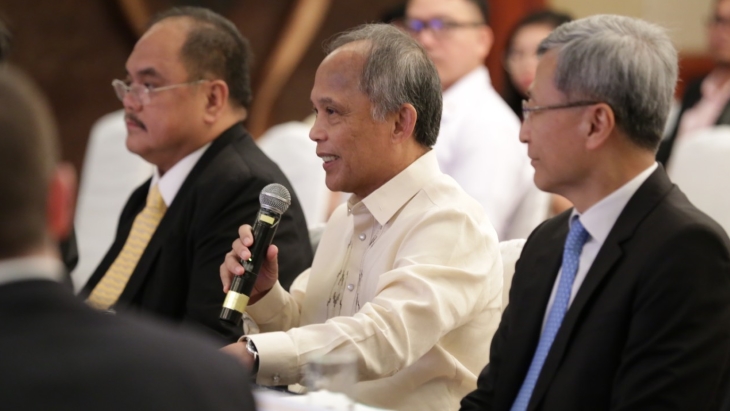With climate change expected to take a devastating toll on Southeast Asia, Indonesia, one of the world’s biggest emitters of greenhouse gases and a country likely to be disproportionately affected by extreme weather conditions, is looking to take action. President Joko “Jokowi” Widodo has committed to cut emissions by at least 29 per cent by 2030 from business-as-usual levels, and the country has also set targets to cut the use of coal for power generation and aims for renewables to make up nearly one-quarter of its energy mix by 2025 from around 12 per cent at present, with around 1,800 megawatts (MW) of wind projects targeted for completion. This year, the country began turning to green finance markets to fund new environmentally friendly development projects. In February this year, Indonesia become the first Asian country to sell “green” bonds internationally in a $1.25 billion deal. Around that time, the Tropical Landscapes Finance Facility (TLFF), a partnership between the United Nations Environment Programme, the World Agroforestry Centre, ADM Capital and BNP Paribas, issued a $95 million sustainability bond to finance rubber plantations in Sumatra and Indonesian Borneo.
Lawyers in the energy space have been following these developments closely. Theodoor Bakker and Emir Nurmansyah, partners at Ali Budiarjo, Nugroho, Reksodiputro, say that the year 2018 appears to have been a “breakthrough” for green financing for Indonesia-based development projects. “Not only has the OJK, the country’s final regulator, issued a sustainable finance roadmap for Indonesia, but it was also the first year that saw both a sovereign green sukuk bond and a private sector green bond being issued,” they say. They add that these developments are evidence that in a country where green financing is in its infancy, there has been a tendency to unlock the potential of the green bond market in Indonesia to promote new financing for climate-smart projects. “A major global development finance provider estimates that the potential opportunities for green financing in Indonesia could reach approximately $275 billion by 2030,” say Bakker and Nurmansyah. Luke Devine, a partner at HHP Law Firm, a member of Baker McKenzie, feels that there have been some mixed signals from the government on this front. “The noises from the presidential palace suggest that the president continues to focus on Indonesia meeting its Paris Agreement commitments,” he says. “However, particularly in the power sector, Indonesia continues to rely heavily on the country’s cheap coal resources and coal-fired power generation to address its electricity shortages.” “The rollout of renewable energy projects has effectively stalled in 2018 due to a number of regulatory changes and PLN, the state electricity monopoly, needing to put in place new procurement procedures, but the hope is that 2019 is a year that Indonesia can start to make some headway in large scale roll out of renewable energy projects,” he adds. CHALLENGING PATH By issuing the green bonds, Indonesia has joined a growing number of developing countries seeking to appeal to ecologically and socially conscious international investors. However, questions remain about just how successful the country’s plans will be. Bakker and Nurmansyah say that commentators have highlighted the slow creation of a comprehensive regulatory framework as an impediment to swift realization of green financing infrastructure. “In addition, critics have raised doubts about how effective the benchmarking of green finance will be, and point to what they call a convoluted system to identify eligible projects and to a measure of opacity in implementing sustainability criteria,” they note. “An influential watchdog organization has warned that green bonds being seen as a mask for environmental laissez-faire should be avoided, as that would do more harm than good. This has been called “greenwashing”. That criticism doesn’t appear altogether fair: The Green Bond and Green Sukuk Framework that the government has published contains quite concrete eligibility standards and other safeguards that are aimed precisely at avoiding this risk.” A third impediment is that for the time being the secondary market remains illiquid, with many investors holding on to the bonds until maturity, they add. Adrianus Adritomo (Tommy), a partner Hiswara Bunjamin & Tandjung, agrees, noting that green financing is a relatively new area and is not heavily regulated as other form of securities. “It is important that the parameters for green projects to be clearly defined,” he says. “This will need to include a comprehensive set of regulations to ensure liquidity in the secondary markets. From the issuer or borrower’s perspective, the Indonesian government needs to set out clear incentives and guidelines for the private sector to explore this option further as currently green financing is considered high cost compared to the non-green financing.” Adritomo also points out that one challenge faced by a number of developing nations, and not just Indonesia, is how each country will ensure that the green aspect is maintained throughout the life of the project. Devine agrees on the cost aspect. “Cost remains a major motivator for Indonesia’s decisions on implementing green projects,” he says. “There is a view that even with today’s relatively high coal prices, a coal-fired power plant is still the answer compared to say a geothermal project solar project or a wind project.” Secondly, he points out that the government has not focused enough on other forms of enabling infrastructure (principally investments in smart grids) to allow a larger uptake of intermittent renewables, such as wind and solar projects. “Outside of the power sector, the profits to be made from palm oil and other agricultural projects are still perceived to far outweigh the profits and benefits arising from forestry conservation or rehabilitation projects,” says Devine. LAW FIRMS INVOLVED Green finance may be at a nascent stage, but law firms are already seeing inquiries coming in from clients. “Clients are currently asking general regulatory advice and guidance on the issuance of green bonds,” says Adritomo. Bakker and Nurmansyah note that while it is still a niche market for ABNR, the firm is keen to build it up over time. “As the market has yet to reach maturity, the role of private practice in developing a significant volume of green capital markets work is still limited,” they say. “We closely monitor regulatory activity by the government and keep our clients abreast of developments.” They disclose that one group of clients that have sought their advice is offshore private equity and development funds that are bound by their charter to invest only in sustainable financial projects. “We explain the various categories that a green bond can theoretically adopt in the Indonesian market: Standard Green Use of Proceeds Bonds, Green Revenue Bonds, Green Project Bonds and Green Securitised Bonds,” says Bakker and Nurmansyah. “We advise on the standards that have internationally been developed, including tests relating to the use of proceeds, the process for project evaluation and selection, management of proceeds, reporting procedures, and the notions of external review, verification, certification, scoring and rating. Many of these paradigms have been developed within the framework of Green Bond Principles, developed and regularly updated by the International Capital Market Association.” “Some time ago we played a significant role in the development of a dedicated standard Indonesian law-governed repo instrument, and we would be keen to play a similar role in the development of green finance instruments for use in Indonesia,” they add. Devine says that with the massive wave of renewable investments occurring around the globe, a lot of clients are coming to ask how they can to get into the game in the Indonesian context. “So, we spend a lot of time helping clients navigate their way through the regulatory framework to participate in the market,” he says. “We have also been at the forefront of the renewables sector development in Indonesia, having acted for clients in developing the first wind and solar IPP projects in the country. These market-first projects have now become the templates for the Indonesian power sector, and we are very proud to have assisted in doing our part to move the market along.” SIMILARITIES AND DIFFERENCES Are there lessons that Indonesia can take from other Asian or emerging markets when it comes to green finance? Well not quite, say lawyers. “When other markets in the region wanted to kick-start their green developments such as renewable energy, they incentivised developers to invest in those new sectors by offering very attractive electricity tariffs for renewable energy through feed-in tariff structures,” says Devine. “Thailand, the Philippines and Japan are examples of markets that initially offered feed-in tariffs for renewable power which were significantly higher than prices paid (for example) for coal-fired or gas-fired generation. As the markets took off and started to mature, the governments there started to remove these financial incentives. Indonesia has not followed suit – instead required renewables to compete head to head with historically cheaper forms of coal-fired generation. This has resulted in a very slow roll out of renewables, which is the exact opposite of what was seen in Thailand, the Philippines and Japan.” Bakker and Nurmansyah say that globally, there are trends that are followed, and structures applied across the board. “An obvious difference with green bonds issued elsewhere is that in at least two countries in Southeast Asia, including Indonesia, sovereign green bonds have taken the form of the sukuk Islamic instrument,” they note. “Also, we perceive a measure of preference from the Indonesian regulator to combine the components of green and social projects into one sustainability-themed instrument, rather than devising ‘pure play’ green instruments. Much of this is still on the drawing board, as the regulator continues to work on a comprehensive regulatory framework for green financing.” Adritomo points out that the green financing market is a new frontier, and many countries are trying to experiment on how to regulate it. “Indonesia regulation currently follows similar guidelines provided by International bodies,” he says. GRADUAL DEVELOPMENT Bakker and Nurmansyah of ABNR say that they expect to see Indonesia’s green finance landscape develop “slowly but surely” in the near future. “The trend for banks to seek to help their clients to conduct business in a more sustainable way is gaining momentum,” they say. “Much will depend on the prevailing political will. In this connection, the outcome of the presidential elections in 2019 will be highly relevant, as will the measure in which the new government will wish to give teeth to adherence to the principles of the Paris Accord and the Nationally Determined Contributions (NDCs).” “The signals that we pick up make us optimistic: The Green Bond and Green Sukuk Framework the government refers to says that Indonesia has a pivotal role in combating climate change and its extensive tropical landscape and seascape, with high biodiversity, high carbon stock values and energy and mineral resources all being contributory factors for the nation to be at the forefront of climate action and environmental protection,” they add. “The NDCs speak of a target of reducing by 2030 greenhouse gas emissions by 29 percent. This will require a tremendous financing push. The government does not have the budget to take that on its shoulders alone, so the role of capital markets, especially the sustainability sector in those markets, is likely to grow. We expect a positive effect of the issuance of the first green bond by a commercial bank earlier this year, made possible after the International Finance Corporation, a member of the World Bank Group, committed $150 million to invest in the offering. That sort of sign of confidence will hopefully help unlock the potential of the green bond market and act as a catalyst to spur new green financing.” Adritomo of HBT says that with more support and incentive from the Indonesia government, green bonds could become a lot more attractive to the private sector. “There is big potential for Indonesia’s green financing,” he notes. “This is largely coming from the growing potential for project finance in Indonesia. For the private sector to view green financing as a viable alternative, the government needs to be more active in promoting green financing.”
 Source: Various sources
Source: Various sources










